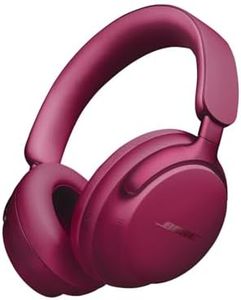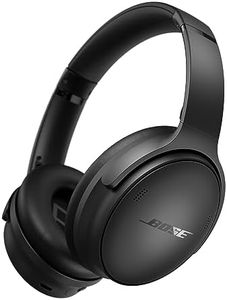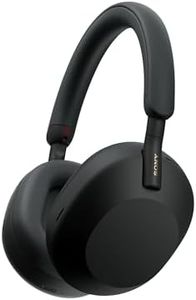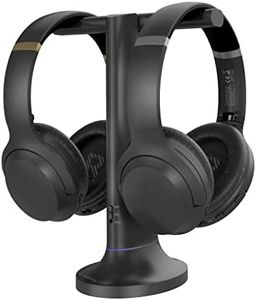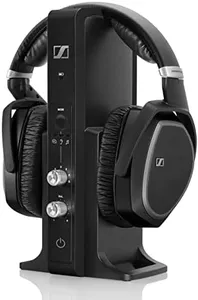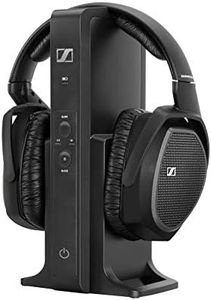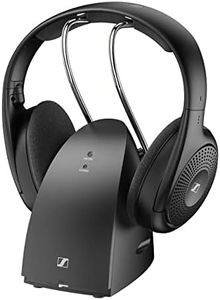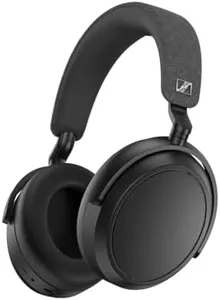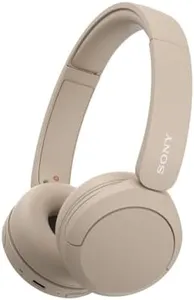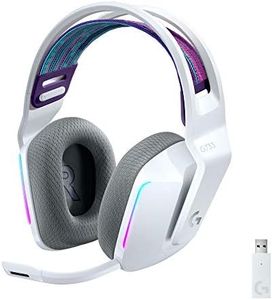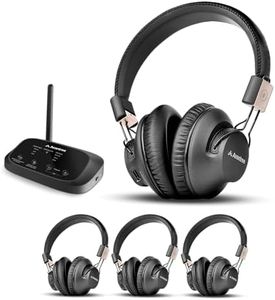We Use CookiesWe use cookies to enhance the security, performance,
functionality and for analytical and promotional activities. By continuing to browse this site you
are agreeing to our privacy policy
10 Best Cordless Headphones For Tv
From leading brands and best sellers available on the web.Buying Guide for the Best Cordless Headphones For Tv
Choosing cordless headphones for TV can greatly enhance your viewing experience by providing clear sound without disturbing others or dealing with tangled wires. It's important to find the right balance between comfort, sound quality, and convenience. Think about where and how you'll use the headphones most: are you watching late-night TV, trying not to disturb someone else, or wanting to move around while listening? Understanding your daily habits and preferences will help you narrow down which features matter most for you.Wireless TechnologyThis refers to how the headphones connect to the TV without using wires, typically through Bluetooth or radio frequency (RF). Bluetooth is commonly supported by modern TVs and also works with other devices like smartphones, but sometimes comes with a slight audio delay, which might not be ideal for watching TV shows or movies. RF, on the other hand, usually requires a base station connected to your TV and can offer longer range and less lag. If you need longer distance or lower latency, RF might suit you better; but if you want flexibility across different devices, Bluetooth could be preferable.
Battery LifeBattery life is how long the headphones can operate on a full charge before needing to be recharged. Some headphones last just a few hours, while others can go for 20 hours or more. If you usually watch long movies or binge-watch several episodes, you'll want headphones with a longer battery life so you're not interrupted mid-show. On the other hand, if you only use them for a short bit each evening, shorter battery life may be fine. Think about your typical viewing habits to decide how much battery life you really need.
Comfort and FitComfort and fit describe how the headphones feel when worn for longer periods. Over-ear headphones sit around your ears and tend to be more comfortable for long sessions, while on-ear models are lighter but may put pressure on your ears after a while. Consider whether you'll be wearing them for hours at a time or just short bursts, and whether you prefer a snug or loose feeling. Trying different styles in person can help you find what suits your head size and comfort needs best.
Sound QualitySound quality refers to how clear, balanced, and immersive the audio is. Factors like strong bass, clear dialogue, and overall detail can all contribute to a better experience. If you're mostly watching news or talk shows, super-high fidelity might not matter as much, but for movies, sports, or music, better sound can make a big difference. Think about what you watch most and whether crisp, detailed audio is a top priority for you.
TV CompatibilityCompatibility means making sure the headphones will work smoothly with your specific TV. Some older TVs might need a headphone jack or special adapters, while newer ones may support Bluetooth out of the box. Checking what outputs your TV has (like Bluetooth, optical, or RCA connections) will help you choose a pair that you can use right away, without extra equipment. This avoids any setup surprises after purchase.
RangeRange is the maximum distance you can move away from the TV before the headphones lose connection. RF headphones tend to offer a higher range, sometimes hundreds of feet, while Bluetooth headphones generally work best within 30 feet of the TV. If you plan to walk around the house or do chores while listening, look for a higher range. If you’ll stay close to the TV, range is less critical.
Controls and FeaturesThis refers to the buttons and features available on the headphones, like volume adjustment, muting, or the ability to answer phone calls. Some headphones offer extras like surround sound simulation or voice enhancements. Consider how much control you want at your fingertips versus using your TV remote. If you find it easier to adjust settings directly from the headphones, look for models with intuitive, easy-to-use controls.
